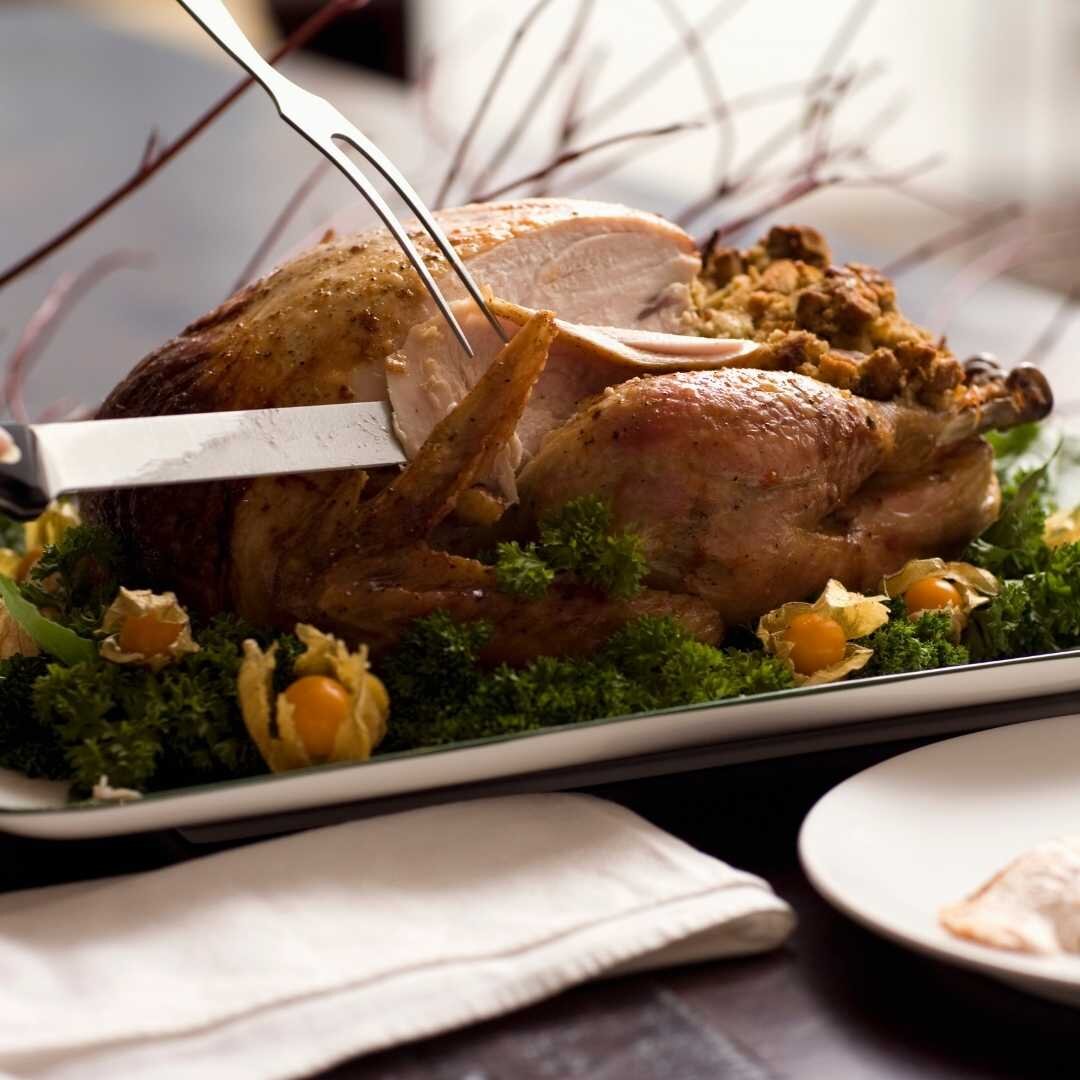Happy New Year! I hope you had a peaceful and enjoyable holiday season. We had the wonderful pleasure of spending time with family and friends, sharing good food and easy conversations—my favorite part of the holidays. It was at one of these warm familial gatherings that two turkeys were served: one from a small, local farmer, the other from a national brand bought at a local grocery chain.

Please do not ask why there were two turkeys. In my opinion, it’s virtually impossible to have too much food at a holiday gathering. Whatever doesn’t get eaten will be taken home and enjoyed as leftovers for days to come—the original comfort food for cold winter nights.
No, what makes this story interesting was the stark difference in these turkeys; and how their tales are an excellent illustration of the state of food and farming in the world today. The first turkey, a home-grown, free-range, as-local-as-you-can-get, probably-had-a-first-name turkey, cost over $70. The second was purchased at the rock-bottom price of 39₵ per pound, or just $7.69 for the whole bird. Remarkably, these turkeys were about the same size, yet one had a price tag almost 10x more than the other.
The more expensive turkey can be a hard sell for most folks. Feeding a family, paying the mortgage, heating your home over the winter…it all adds up. Being able to buy a turkey for less than $10 means having more dough in your pocket to pay for all the other things. I happened to stop at that grocery store the day of the big turkey sale and marveled at all the shopping carts filled with multiple turkeys—most likely one to serve, one to put in the freezer, and one to donate to a local charity. At those prices, everyone was stocking up and I can’t blame them! (I chose not to serve turkey at our family gathering—we opted for a Jones Family Farm roasting chicken instead.)
Of course, the farmer in me wondered how the math stacked up. How much does it cost to raise a turkey? When we raised turkeys years ago, the poults (baby chicks) were $4 each. Prices have gone up a bit since then, and now I can’t find hatched poults for less than $6.50 apiece. It then takes 4 to 5 months to grow out the turkey to harvest size. Over the course of those 4-5 months, each turkey will eat lots of food—approximately 6lbs of feed per 1lb of weight gain. Depending on the quality of the feed, a 20lb bird will have consumed at least $35-45 worth of feed. Finally, there is a cost to process the bird, either by you or paying someone else to do it, generally $8-15 each. If you’ve been keeping score, our home-grown turkey pencils out to approximately $50 to $65, and we haven’t even calculated fuel, labor, infrastructure, and losses. Sounds to me like that $70 turkey was appropriately priced.
Which brings me to my next, much bigger question: How can the big name brand sell a whole turkey for just $7.69? For me, this is the real mystery. I’m sure they’ve been able to bring their costs down just by being really, really big. When you’re really big, it’s easier to buy inputs at such quantities that you’re paying pennies on the dollar. These large name brands are also vertically integrated, owning the hatcheries, the feed mills, the processing plants, the trucks, and contracting with farmers to do the actual raising of the birds. They’ve minimized their risks and put most of the infrastructure and loss costs on the farmers. But that still doesn’t quite explain the $7.69.
To get the price that low, the grocery store chain must have been selling the turkeys as a “loss-leader”. A “loss-leader” is something the store offers at a lower price than they paid in order to drive traffic to their location. Stores do this all the time with staple items like milk—or turkeys during the holidays—in the hopes that customers will pick up a few other things while they’re in the store. The store will take a loss on the one item, but make it up with sales on other goods. Unfortunately, the result is a constant downward pressure on price expectations, especially on certain food items. It’s little wonder then that paying $70 for bird suddenly seems absurd in the extreme… or the idea of paying more than a couple bucks on a gallon of milk is unthinkable.
So, how did the two turkeys taste? There was no true consensus at the table that day; some preferred the free-range turkey, others the grocery store turkey, while most at the table really couldn’t taste the difference and therefore thought the less expensive turkey was the better buy. To me, this was the most telling moment of all. Cheaper food produced by vertically integrated agribusinesses and offered as a loss-leader will always win out, as long as it tastes fine. If the vast majority of consumers cannot taste the difference between a home-grown turkey and a mass-produced one, or milk from a 50-cow dairy versus a 5,000 cow dairy, why would anyone pay more?
As for me and my farm, this was a reminder that our products have to taste not only a little better, but a lot better than mass market items to be successful. Looks like 2020 is going to be a busy year!
A final note: A good friend runs a local food pantry. He was able to buy 30-40 of the lower priced turkeys for area families in need. I am so happy he was able to do this; I wouldn’t want anyone to go without, especially during the holidays. This sort of outreach would have been impossible at $70 per turkey. Depending on how you look at it, cheap food is either a blessing or a curse…or maybe a weird combination of both.